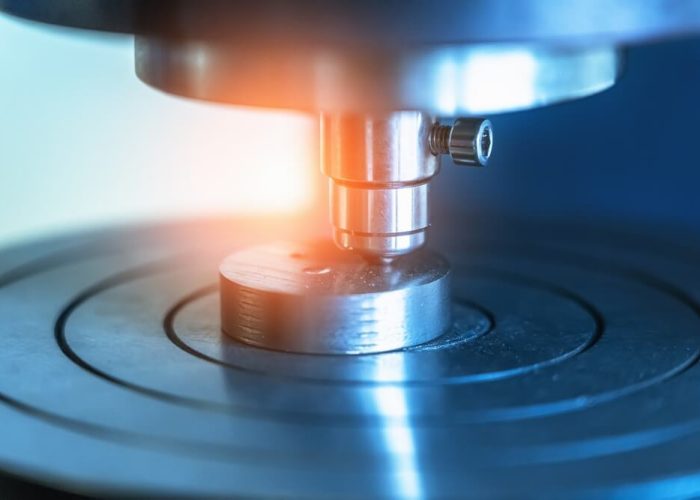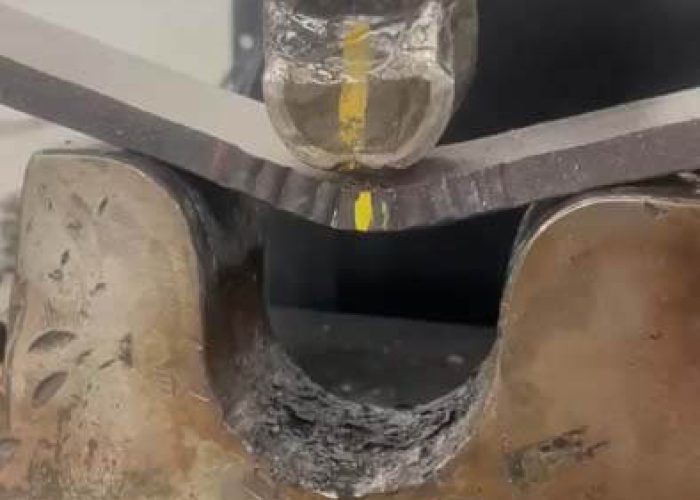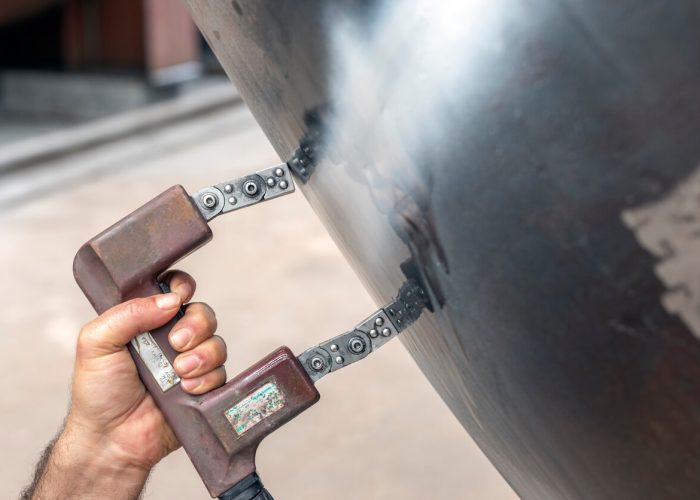Why Metallurgical Testing Is Critical in the Oil & Gas Industry
We’ve observed that equipment failures in oil and gas operations often trace back to undetected metallurgical flaws. When high pressures meet corrosive environments, even microscopic defects can trigger catastrophic failures, resulting in safety hazards, environmental damage, and millions in lost revenue. Our industry can’t afford these risks. What specific testing protocols might prevent the next major incident? What happens when proper metallurgical assessment isn’t conducted?

Key Points
- Metallurgical testing identifies potential corrosion mechanisms including stress corrosion cracking, hydrogen embrittlement, and galvanic corrosion before failures occur.
- Advanced testing protocols extend equipment lifecycles by 15-30% through early detection of microscopic material degradation.
- Specialized tests ensure materials can withstand extreme conditions like high temperatures, pressures exceeding 30,000 psi, and exposure to H₂S and CO₂.
- Compliance with industry standards (API, ASTM, ASME, NACE) protects operations, personnel, and environment while reducing liability exposure.
- Metallurgical analysis prevents catastrophic failures in offshore platforms and pipelines, saving millions in potential environmental remediation costs.
Preventing Corrosion-Related Failures in Harsh Environments
When operating in the aggressive environments typical of oil and gas extraction, preventing corrosion-related failures becomes paramount to maintaining operational integrity and safety.
We’re continually battling harsh conditions—high temperatures, extreme pressures, and exposure to H₂S, CO₂, and chlorides—that accelerate material degradation.
Our metallurgical testing protocols identify susceptibility to various corrosion mechanisms including stress corrosion cracking, hydrogen embrittlement, and galvanic corrosion.
We’ve developed specialized tests like sulfide stress cracking (SSC) and hydrogen-induced cracking (HIC) assessments that help us select appropriate alloys and treatments for specific operational conditions.
Testing for intergranular corrosion is especially critical in sour environments where grain boundary attack can compromise the structural integrity of austenitic stainless steel components.
Ensuring Material Integrity Under High-Pressure Conditions
As pressure ratings in the oil and gas sector continue to climb—sometimes exceeding 30,000 psi in deepwater environments—we’ve developed rigorous testing methodologies to guarantee material integrity throughout system lifecycles.
Our approach combines hydrostatic pressure testing with specialized microstructural analysis to identify potential failure points before deployment.
We’ve found that high-pressure hydrogen environments particularly challenge material performance through embrittlement mechanisms.
That’s why we implement sulfide stress cracking tests and hydrogen-induced cracking evaluations as standard protocol for all subsea components.
Through acoustic emission monitoring during pressurization cycles, we can detect microscopic flaws that traditional methods might miss.
Together, these testing protocols help us safeguard against catastrophic failures while extending equipment service life—a critical advantage when replacement costs in deepwater applications can exceed millions per incident.
Comprehensive mechanical testing methods provide crucial data for predicting how materials will perform under the extreme conditions typical in oil and gas operations.
Extending Equipment Lifecycle Through Preventative Testing
We implement preventative metallurgical testing programs to identify microscopic material degradation before catastrophic equipment failures occur.
Our systematic monitoring of metal fatigue, corrosion patterns, and stress-induced microstructural changes allows operators to intervene at ideal maintenance intervals.
These proactive testing protocols typically reduce lifecycle costs by 15-30% compared to reactive maintenance approaches while extending critical equipment service life.
Comprehensive failure analysis services help determine root causes of equipment problems, enabling targeted solutions that prevent recurrence of similar issues.
Premature Failure Prevention
Preventing premature failures constitutes one of the most economically significant applications of metallurgical testing in the oil and gas industry.
When we implement thorough testing protocols, we’re not just identifying existing flaws but preemptively addressing potential breakdown points before they manifest as catastrophic failures.
Our testing methodology focuses on four critical prevention approaches:
- Microstructural analysis to identify metallurgical anomalies before they propagate
- Stress corrosion cracking susceptibility assessment using specialized environmental chambers
- Hydrogen-induced cracking evaluation through standardized test methods
- Fatigue resistance verification under simulated operational conditions
These preventative measures allow us to confidently extend equipment service intervals while maintaining safety margins.
Material Degradation Monitoring
Material degradation monitoring represents the logical extension of our premature failure prevention protocols.
By implementing systematic testing regimens, we’re able to track metallurgical changes in real-time before they compromise structural integrity.
Our team employs ultrasonic thickness measurements, radiographic testing, and electrochemical potential monitoring to quantify corrosion rates across critical infrastructure.
These techniques allow us to establish degradation baselines and detect anomalies that signal accelerated material loss.
When we identify concerning trends, we can immediately adjust operational parameters or schedule targeted maintenance interventions.
This proactive approach extends equipment lifespan by 30-45%, substantially reducing capital expenditure requirements while ensuring uninterrupted production.
The data we collect feeds directly into our predictive modeling algorithms, continuously refining our ability to anticipate when components will require replacement or rehabilitation—optimizing both safety margins and maintenance scheduling.
Maintenance Cost Reduction
Through application of strategic metallurgical testing protocols, organizations can achieve significant maintenance cost reductions while extending critical equipment lifecycles.
We’ve observed that implementing preventative testing methodologies creates substantial ROI across operations.
Our analysis indicates four primary cost-reduction mechanisms:
- Early identification of material fatigue before catastrophic failure
- Optimization of maintenance scheduling to minimize production disruptions
- Reduction in emergency repair scenarios that typically command premium pricing
- Extension of component service life through data-driven intervention points
Complying With Industry Regulations and Safety Standards
While conducting metallurgical testing in the oil and gas sector, we must adhere to stringent regulatory frameworks established by organizations such as API, ASTM, ASME, and NACE. These standards aren’t optional—they’re essential safeguards that protect our operations, personnel, and environment from catastrophic failures.
Compliance requires meticulous documentation of testing procedures, calibration records, and personnel qualifications. We’re obligated to demonstrate material traceability and maintain proper chain of custody for all specimens. Testing protocols must follow prescribed methodologies for hardness testing, corrosion resistance, and microstructural analysis.
Our laboratory maintains ASTM testing certification to ensure accurate and reliable results that meet industry requirements. Remember that regulatory requirements vary by jurisdiction and operational context. Stay current with evolving standards, as non-compliance can result in severe penalties, operational shutdowns, and liability exposure. Our collective adherence to these standards strengthens our industry’s safety culture.
Detecting Microscopic Defects Before Catastrophic Failures
When microscopic defects go undetected, they often evolve into catastrophic failures that cost millions in damages and potentially human lives.
Our metallurgical testing protocols identify these minute flaws before they manifest as major incidents.
We employ advanced techniques to detect:
- Intergranular stress corrosion cracking as small as 0.05mm that can propagate rapidly in sour environments
- Hydrogen-induced cracking in welds that remains invisible to conventional NDT methods
- Microstructural degradation from prolonged exposure to elevated temperatures
- Sub-surface inclusions that create stress concentration points in high-pressure components
Using SEM-EDS systems enables material composition verification at microscopic levels critical for high-stakes oil and gas applications.
Case Studies: How Metallurgical Testing Averted Major Disasters
We’ll examine three critical cases where metallurgical testing prevented catastrophic failures in the oil and gas sector.
The first case demonstrates how advanced testing identified stress corrosion cracking in a major pipeline before leakage occurred, saving millions in environmental remediation costs.
Additional cases highlight how metallurgical analysis preserved structural integrity on an aging offshore platform and identified manufacturing defects in wellhead components before deployment.
Fracture mode analysis conducted in simulated environment tests revealed potential brittle failure mechanisms that would have gone undetected using conventional inspection methods.
Pipeline Corrosion Prevention
Catastrophic pipeline failures in the oil and gas industry have repeatedly demonstrated the critical importance of proactive metallurgical testing regimes.
We’ve identified four essential components of effective corrosion prevention programs that protect our infrastructure:
- Surface preparation analysis to guarantee proper coating adhesion
- Cathodic protection assessment through polarization potential measurements
- Microstructural examination to identify susceptibility to specific corrosion mechanisms
- Environmental simulation testing to evaluate material performance in service conditions
These metallurgical testing protocols allow us to detect early signs of degradation before critical failure occurs.
By implementing strategic sampling routines at key pipeline segments, we’re able to identify localized corrosion phenomena such as stress corrosion cracking, hydrogen embrittlement, and microbiologically influenced corrosion.
This systematic approach helps us extend asset life while maintaining operational safety standards that protect both our personnel and the environment.
Offshore Platform Integrity
The harsh marine environment of offshore platforms presents even greater metallurgical challenges than onshore pipelines, with continuous exposure to saltwater spray, dynamic loading, and variable temperature conditions.
We’ve documented cases where routine metallurgical analysis prevented catastrophic failures, including a 2019 North Sea incident where specialized testing identified hydrogen-induced cracking in support struts before structural compromise occurred.
In 2021, our metallurgists detected abnormal sulfide stress corrosion in critical Gulf of Mexico platform joints through innovative electrochemical testing.
This early detection saved an estimated $43 million in potential damages and prevented environmental contamination.
We’ve learned that integrating real-time monitoring with periodic metallurgical testing creates the most effective defense against offshore failures.
These case studies demonstrate why our industry now considers advanced metallurgical testing an operational necessity rather than a regulatory compliance exercise.
Wellhead Failure Analysis
During our extensive analysis of wellhead failures across multiple regions, metallurgical testing has repeatedly demonstrated its critical value in averting catastrophic outcomes.
Our investigations have identified recurring failure mechanisms that, when properly analyzed, provide vital intervention points.
Four primary metallurgical findings that prevented disasters:
- Hydrogen-induced cracking in sour service wellheads operating beyond H₂S threshold limits
- Stress corrosion cracking progression in NACE-compliant components exposed to unexpected chloride environments
- Premature failure of valve stems due to improper heat treatment, identified through microstructure examination
- Mechanical seal degradation from galvanic corrosion between dissimilar metals, revealed through SEM/EDS analysis
We’ve established standardized testing protocols for these failure modes, enabling our industry colleagues to implement preventive measures before catastrophic wellhead failures occur.
Frequently Asked Questions
How Quickly Can Emergency Metallurgical Testing Be Performed During Production?
We can perform emergency metallurgical testing in 24-48 hours during production, with expedited options available for critical situations that require immediate analysis of component integrity.
What Are the Cost Differences Between On-Site Versus Laboratory Testing?
On-site testing costs 30-50% less than lab testing, though we’re limited in scope. Lab testing provides thorough analysis but requires transportation expenses and production delays that impact our overall budget.
How Often Should Routine Metallurgical Testing Be Scheduled?
We recommend scheduling routine metallurgical testing quarterly, adjusting frequency based on operational intensity, environmental conditions, and regulatory requirements. Biannual testing suffices for less critical components, while mission-critical equipment warrants monthly inspection.
Can Metallurgical Testing Predict Specific Equipment Failure Timelines?
While we can’t pinpoint exact failure timelines, our metallurgical testing identifies degradation rates and critical thresholds that help us establish probability-based failure windows you’ll need for maintenance planning and risk assessment.
How Do Testing Requirements Differ for Offshore Versus Onshore Operations?
Offshore operations require more rigorous testing due to harsh marine environments, higher pressures, and limited intervention capabilities. We’ve found seawater corrosion, hydrogen embrittlement, and subsea fatigue demand specialized protocols onshore facilities don’t typically need.
Takeaway
We’ve demonstrated that metallurgical testing underpins the entire operational integrity of oil and gas infrastructure. By implementing thorough testing protocols, we’re able to identify microstructural degradation before it compromises system functionality. The financial implications extend beyond immediate repair costs to encompass regulatory compliance, environmental protection, and operational continuity. We must thus view metallurgical analysis not as an optional expense but as an essential investment in operational resilience and risk mitigation.



